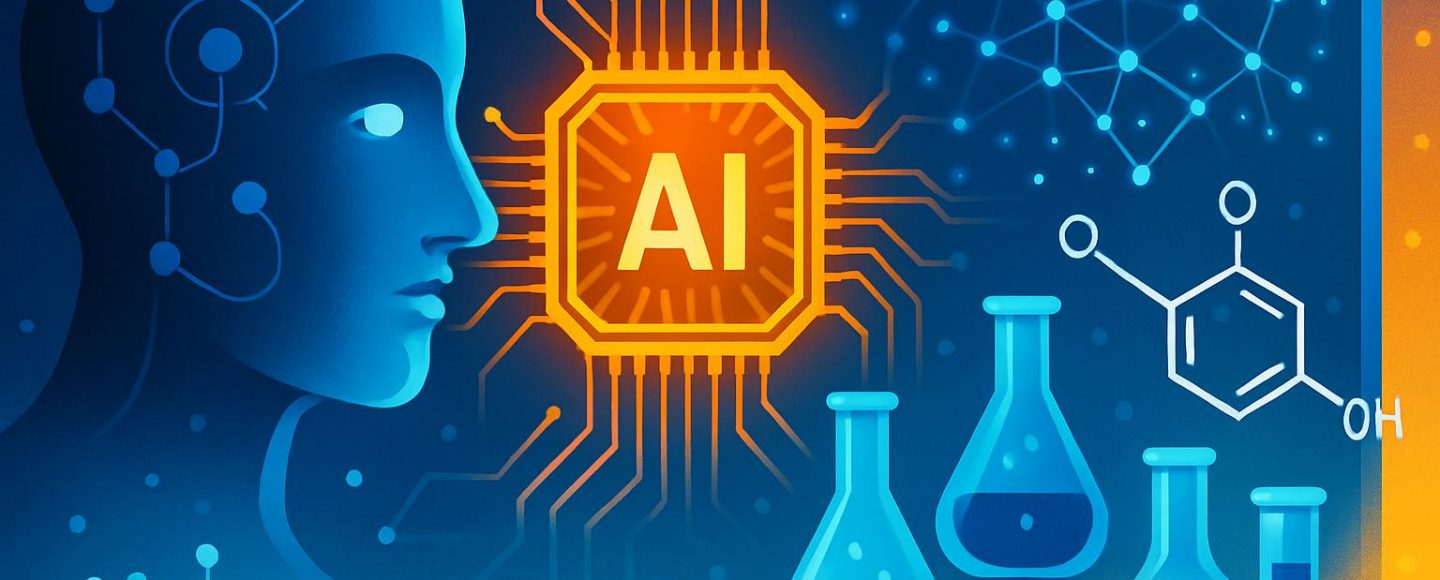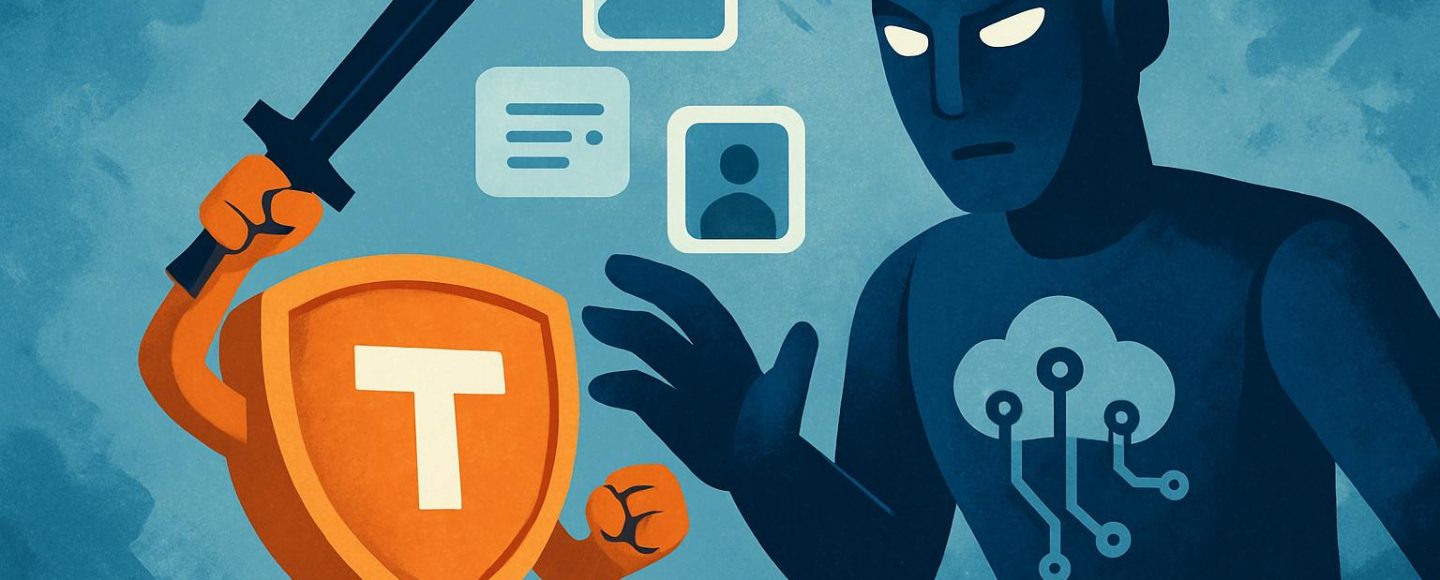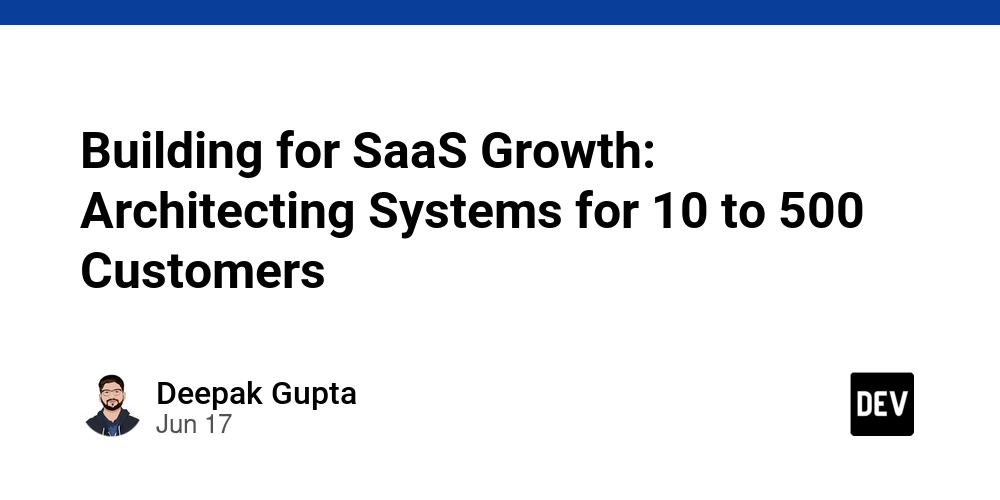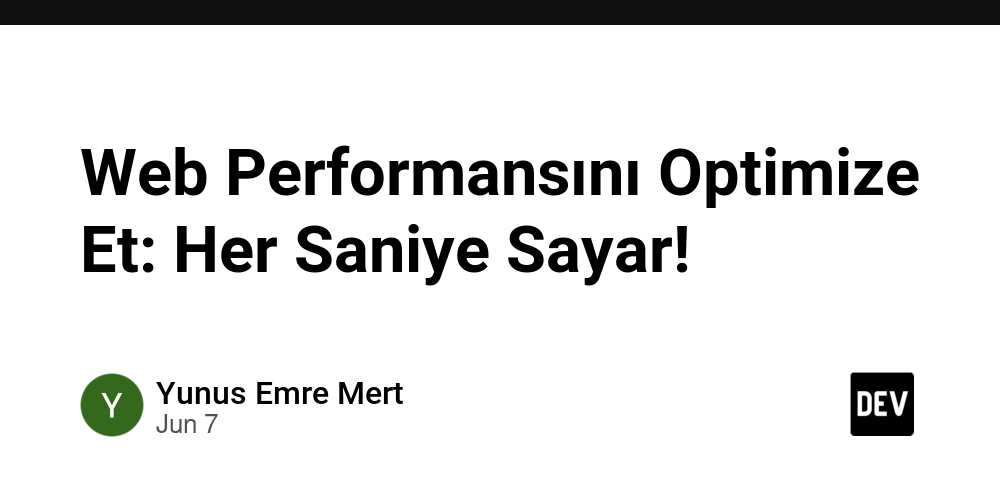What is cosmos-python? The Open Source Business Model, Funding, and Community
Abstract: This post dives into the world of cosmos-python—a groundbreaking Python library that makes blockchain interactions simpler while championing open source funding models and community-driven development. We discuss the background and context of cosmos-python across the broader blockchain ecosystem, its core concepts and features, real-world applications, challenges, and future innovations. With technical insights and practical examples, this article highlights the power of decentralization, the flexibility of the MIT license, and innovative funding mechanisms that leverage digital collectibles and NFTs. Introduction Cosmos-python is emerging as a leading Python library designed for seamless interaction with the Cosmos blockchain. Rooted in the principles of open source innovation and community-driven development, cosmos-python not only simplifies blockchain programming but also presents a sustainable business model inspired by MIT licensing and decentralized funding. In our discussion, we integrate insights from related projects within the blockchain and NFT communities—with influences such as Cosmos Network and pioneering NFT initiatives like the Zed Run NFT Collection by Virtually Human Studio. This post will explore technical, business, and community facets of cosmos-python with supporting tables, bullet points, and authoritative links for further reading. Background and Context The growth of blockchain technology and the rise of decentralized applications have forced developers and enthusiasts to rethink traditional funding and licensing paradigms. Cosmos-python is born out of this need to simplify blockchain development using the widely known Python language. Here’s a concise historical perspective and contextual background: Historical Emergence: Early blockchain libraries often involved steep learning curves due to complex architectures. Cosmos-python was developed by enthusiastic volunteers to break this barrier with Python’s easy-to-read syntax. Ecosystem Role: As blockchain technology grew, a robust ecosystem including platforms like Cosmos Network and innovative NFT projects emerged, with community-driven funding models and token-based incentives garnering attention. Licensing Philosophy: Adopting the permissive MIT license, cosmos-python facilitates broad collaboration, enabling integration, modification, and seamless distribution—key to paving the way for transparent and decentralized software funding. Below is a table summarizing the evolution and key milestones of cosmos-python: Milestone Description Initial Development Created by a volunteer community to simplify blockchain interactions with Python. Adoption of MIT License Ensures minimal legal hurdles and encourages community contributions globally. Integration with Cosmos Leverages the Cosmos SDK to bridge traditional Python development with advanced blockchain tech. Funding Innovations Introduced community donations and crypto-based micropayments, paving the way for open source sustainability. Core Concepts and Features Cosmos-python stands out thanks to several core concepts and features that underpin its success and utility: 1. Open Source Licensing and Transparency MIT License Benefits: The permissive MIT license allows developers to use, modify, and distribute cosmos-python without heavy legal burdens. This transparency builds trust among users and potential contributors alike. Transparency in Funding: Funds are raised through community donations, crypto micropayments, and innovative sponsorships. This model fosters accountability where the community can track how contributions are utilized. 2. Community-Driven Development Collaborative Contributions: Cosmos-python is developed by contributors worldwide. Regular hackathons, webinars, and meetups ensure constant engagement and knowledge sharing. Decentralized Decision-Making: The project’s governance model encourages community members to influence design changes, propose features, and even explore novel funding strategies. This reflects broader trends in blockchain governance as seen in initiatives like Wax Blockchain Punks NFT Collection. 3. Technical Features Modularity: The library is built in a modular fashion to reduce complexity. Developers can plug in features, connecting easily with Cosmos SDK and allowing rapid prototyping. Interoperability: Combined with Python’s extensive ecosystem, cosmos-python enables developers to harness other libraries for tasks such as cryptographic functions, data analytics, and even connection with off-chain databases. 4. Innovative Funding Models Community-Driven Funding: Instead of relying solely on venture capital, the funding model incorporates community donations via platforms like GitHub Sponsors and crypto-based funding streams. This model reflects trends reported in articles like Exploring Economic Models for Op

Abstract:
This post dives into the world of cosmos-python—a groundbreaking Python library that makes blockchain interactions simpler while championing open source funding models and community-driven development. We discuss the background and context of cosmos-python across the broader blockchain ecosystem, its core concepts and features, real-world applications, challenges, and future innovations. With technical insights and practical examples, this article highlights the power of decentralization, the flexibility of the MIT license, and innovative funding mechanisms that leverage digital collectibles and NFTs.
Introduction
Cosmos-python is emerging as a leading Python library designed for seamless interaction with the Cosmos blockchain. Rooted in the principles of open source innovation and community-driven development, cosmos-python not only simplifies blockchain programming but also presents a sustainable business model inspired by MIT licensing and decentralized funding. In our discussion, we integrate insights from related projects within the blockchain and NFT communities—with influences such as Cosmos Network and pioneering NFT initiatives like the Zed Run NFT Collection by Virtually Human Studio. This post will explore technical, business, and community facets of cosmos-python with supporting tables, bullet points, and authoritative links for further reading.
Background and Context
The growth of blockchain technology and the rise of decentralized applications have forced developers and enthusiasts to rethink traditional funding and licensing paradigms. Cosmos-python is born out of this need to simplify blockchain development using the widely known Python language. Here’s a concise historical perspective and contextual background:
- Historical Emergence: Early blockchain libraries often involved steep learning curves due to complex architectures. Cosmos-python was developed by enthusiastic volunteers to break this barrier with Python’s easy-to-read syntax.
- Ecosystem Role: As blockchain technology grew, a robust ecosystem including platforms like Cosmos Network and innovative NFT projects emerged, with community-driven funding models and token-based incentives garnering attention.
- Licensing Philosophy: Adopting the permissive MIT license, cosmos-python facilitates broad collaboration, enabling integration, modification, and seamless distribution—key to paving the way for transparent and decentralized software funding.
Below is a table summarizing the evolution and key milestones of cosmos-python:
| Milestone | Description |
|---|---|
| Initial Development | Created by a volunteer community to simplify blockchain interactions with Python. |
| Adoption of MIT License | Ensures minimal legal hurdles and encourages community contributions globally. |
| Integration with Cosmos | Leverages the Cosmos SDK to bridge traditional Python development with advanced blockchain tech. |
| Funding Innovations | Introduced community donations and crypto-based micropayments, paving the way for open source sustainability. |
Core Concepts and Features
Cosmos-python stands out thanks to several core concepts and features that underpin its success and utility:
1. Open Source Licensing and Transparency
MIT License Benefits:
The permissive MIT license allows developers to use, modify, and distribute cosmos-python without heavy legal burdens. This transparency builds trust among users and potential contributors alike.Transparency in Funding:
Funds are raised through community donations, crypto micropayments, and innovative sponsorships. This model fosters accountability where the community can track how contributions are utilized.
2. Community-Driven Development
Collaborative Contributions:
Cosmos-python is developed by contributors worldwide. Regular hackathons, webinars, and meetups ensure constant engagement and knowledge sharing.Decentralized Decision-Making:
The project’s governance model encourages community members to influence design changes, propose features, and even explore novel funding strategies. This reflects broader trends in blockchain governance as seen in initiatives like Wax Blockchain Punks NFT Collection.
3. Technical Features
Modularity:
The library is built in a modular fashion to reduce complexity. Developers can plug in features, connecting easily with Cosmos SDK and allowing rapid prototyping.Interoperability:
Combined with Python’s extensive ecosystem, cosmos-python enables developers to harness other libraries for tasks such as cryptographic functions, data analytics, and even connection with off-chain databases.
4. Innovative Funding Models
Community-Driven Funding:
Instead of relying solely on venture capital, the funding model incorporates community donations via platforms like GitHub Sponsors and crypto-based funding streams. This model reflects trends reported in articles like Exploring Economic Models for Open Source Projects.NFT-Based Incentive Systems:
Some funders and contributors have been exploring NFT rewards as digital collectibles, drawing inspiration from projects like the Wax William Shatner NFT Collection.
5. Security and Scalability
Blockchain Integration Security:
By interfacing directly with the Cosmos blockchain—a network known for its robustness and security—cosmos-python benefits from a trusted and scalable environment.Rapid Iteration and Testing:
The open source model encourages fast iterations and peer reviews, a necessity in a rapidly changing technological landscape.
Applications and Use Cases
Cosmos-python’s blend of simplicity and community-driven innovation finds applications in multiple areas:
Decentralized Application (dApp) Development:
Developers use cosmos-python to create dApps that can manage transactions on the Cosmos blockchain. For example, a decentralized finance (DeFi) dApp that supports smart contract integration can leverage the library’s modular functions.Educational Tools and Rapid Prototyping:
Given Python’s popularity among educators and students, cosmos-python serves as a powerful tool to teach blockchain concepts in academic institutions. Its transparency and ease of use make it ideal for rapid prototyping.NFT and Tokenization Projects:
As demonstrated by communities focused on NFT projects, innovative funding methods (including tokenized incentives) have been integrated with projects similar to cosmos-python. Not only does this showcase funding models similar to NFT Puzzle, but it also emphasizes community rewards.
Below is a bullet list summarizing practical examples where cosmos-python is applied:
- Building smart contracts that interact directly with the Cosmos blockchain.
- Developing blockchain-based financial instruments using Python’s flexible coding environment.
- Enabling digital collectibles and NFT-based incentive systems that drive engagement and transparent funding.
- Integrating blockchain data analytics within existing Python frameworks.
Challenges and Limitations
Despite its promising features and community support, cosmos-python faces several challenges and limitations:
Technical Challenges
Complexity in Blockchain Integration:
Despite Python’s simplicity, integrating with the inherently complex Cosmos SDK may require additional technical expertise. Developers must balance ease of use with advanced blockchain protocols.Scalability Concerns:
As usage grows, scaling the network and maintaining performance can be challenging. Projects must continually refine consensus algorithms and interoperability for higher throughput.
Adoption and Funding Challenges
Matching Traditional Funding Levels:
While community-driven funding offers transparency, it may not always match the scale of traditional venture capital. Ensuring consistent funding flows can be a challenge during wider adoption cycles.Regulatory and Legal Uncertainty:
Given the evolving legal landscape surrounding blockchain, ensuring that funding models and operations comply with regulatory frameworks is an ongoing concern. The openness provided by the MIT license helps, but external legal challenges may persist.
Community and Governance Limitations
Decentralized Decision Making Complexity:
While a decentralized governance model empowers contributors, it may also lead to slower decision-making processes and potential governance conflicts.Sustaining Long-term Engagement:
Maintaining active community involvement is crucial and can be challenging. The project must continuously incentivize and recognize contributors to maintain sustained growth.
A short table below outlines these challenges:
| Challenge | Impact | Potential Mitigation |
|---|---|---|
| Blockchain Integration | Steep technical requirements | Enhanced documentation and community mentoring |
| Scalability | Increased latency with high volume | Modular design and robust consensus mechanism |
| Traditional Funding Gap | Inconsistent revenue streams | NFT-based micropayments and grant programs |
| Regulatory Uncertainty | Legal challenges impacting growth | Proactive legal consultations and adaptive models |
| Governance Complexity | Slowed decision making | Clear governance frameworks and delegation models |
Future Outlook and Innovations
Looking forward, several trends and innovations are set to influence the evolution of cosmos-python and similar open source projects:
Decentralized Autonomous Organizations (DAOs):
Governance structures may evolve to incorporate DAO-like models, fostering even greater transparency and collective decision-making. Future initiatives like Arbitrum and Community Governance hint at these promising developments.Blockchain-Based Micropayments:
The integration of blockchain micropayments will enhance open source funding models further, ensuring that even small contributions add up. This advancement supports sustainability in the open source ecosystem.Enhanced Interoperability:
Future iterations of cosmos-python will likely see improved interoperability with other blockchain networks, not just Cosmos. This will extend its use cases to multi-chain environments and broaden its global impact.Advanced Security Features:
With the constant rise in cybersecurity threats, future upgrades may incorporate advanced encryption techniques and decentralized security layers, ensuring better protection for decentralized applications.Innovative NFT Incentives:
Leveraging NFT tokenization for developer rewards—akin to models explored by projects such as the Wax Street Fighter NFT Collection—will continue to attract new talent and investors into the ecosystem.
Additionally, industry experts have noted emerging opportunities in the realm of blockchain data analytics and smart contract automation. Articles like Exploring GitHub Sponsors for Developers emphasize that linking transparent funding mechanisms with open source expertise is the future.
Summary
Cosmos-python represents a transformative force in the evolving landscape of Python blockchain development. Through its innovative open source funding, MIT licensing structure, and robust community engagement, it has carved out a unique niche. While technical and regulatory challenges exist, the promise of decentralized governance, blockchain micropayments, and NFT-based incentive models paves the way for broader adoption and sustainability.
Key takeaways include:
Community Empowerment:
Cosmos-python’s success is deeply rooted in democratized decision-making and transparent funding—elements that foster innovation and trust.Open Source Integrity:
The MIT license and open codebase remove barriers, enabling both individuals and enterprises to contribute to and benefit from this evolution.Future-Driven Innovation:
Future enhancements such as DAO integrations, advanced interoperability, and innovative funding models signal that cosmos-python is not just a current tool but a future cornerstone for decentralized development.
For more details on the cosmos-python funding model, business rationale, and community narratives, check out the original article on cosmos-python’s open source business model, funding, and community. You can also explore related initiatives and community projects with resources from Cosmos Network and other innovative platforms like those discussed in Exploring Economic Models for Open Source Projects.
Further Resources and References
- Blockchain and Python Libraries: For more on integrating Python with blockchain, see articles at Gitcoin Grants for Open Source.
- NFT Incentives and Tokenization: Explore insights from initiatives like the Wax William Shatner NFT Collection and related NFT projects.
- Open Source Funding Models: Check out more in-depth guides such as Unlocking the Potential of GitHub Sponsors for funding insights.
Conclusion
Cosmos-python is more than a tool—it’s a movement toward the democratization of blockchain development. By aligning technical innovation with community-driven funding and transparent governance, cosmos-python sets an example for future open source projects. As the technology landscape evolves and barriers between traditional and decentralized funding blur, projects like cosmos-python will continue to provide a sustainable and scalable platform for innovations in blockchain technology and beyond.
In a world where software development meets advanced blockchain technology, cosmos-python stands as a beacon of open collaboration, offering a glimpse into the future of digital decentralization and open source sustainability.
Thank you for reading!
Stay tuned for more insights on open source innovations and the future of blockchain technology.










































































































































































![[The AI Show Episode 156]: AI Answers - Data Privacy, AI Roadmaps, Regulated Industries, Selling AI to the C-Suite & Change Management](https://www.marketingaiinstitute.com/hubfs/ep%20156%20cover.png)
![[The AI Show Episode 155]: The New Jobs AI Will Create, Amazon CEO: AI Will Cut Jobs, Your Brain on ChatGPT, Possible OpenAI-Microsoft Breakup & Veo 3 IP Issues](https://www.marketingaiinstitute.com/hubfs/ep%20155%20cover.png)
















































































































































































































































.jpg?width=1920&height=1920&fit=bounds&quality=70&format=jpg&auto=webp#)
























_Michael_Burrell_Alamy.jpg?width=1280&auto=webp&quality=80&disable=upscale#)





























































































































































































